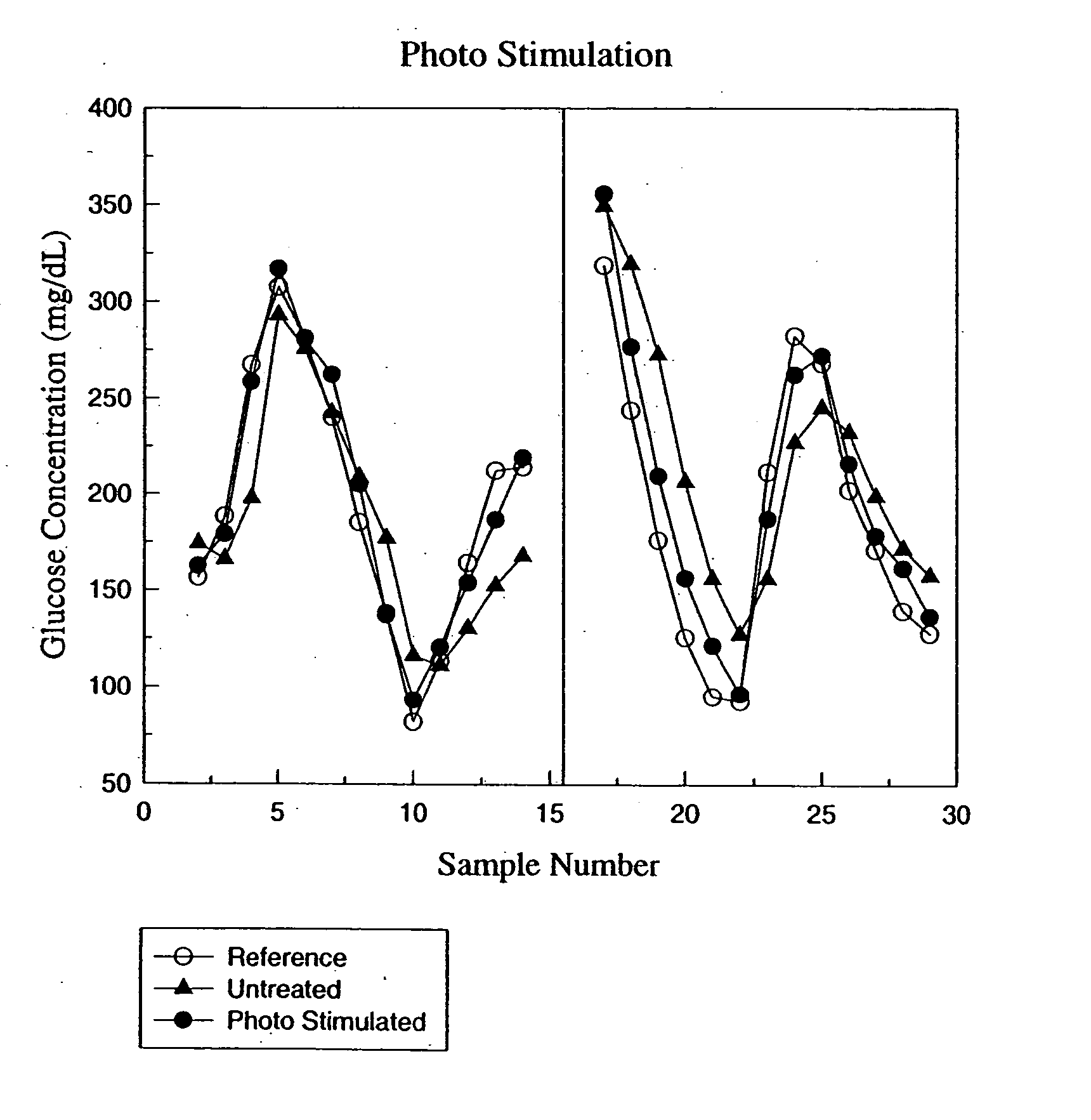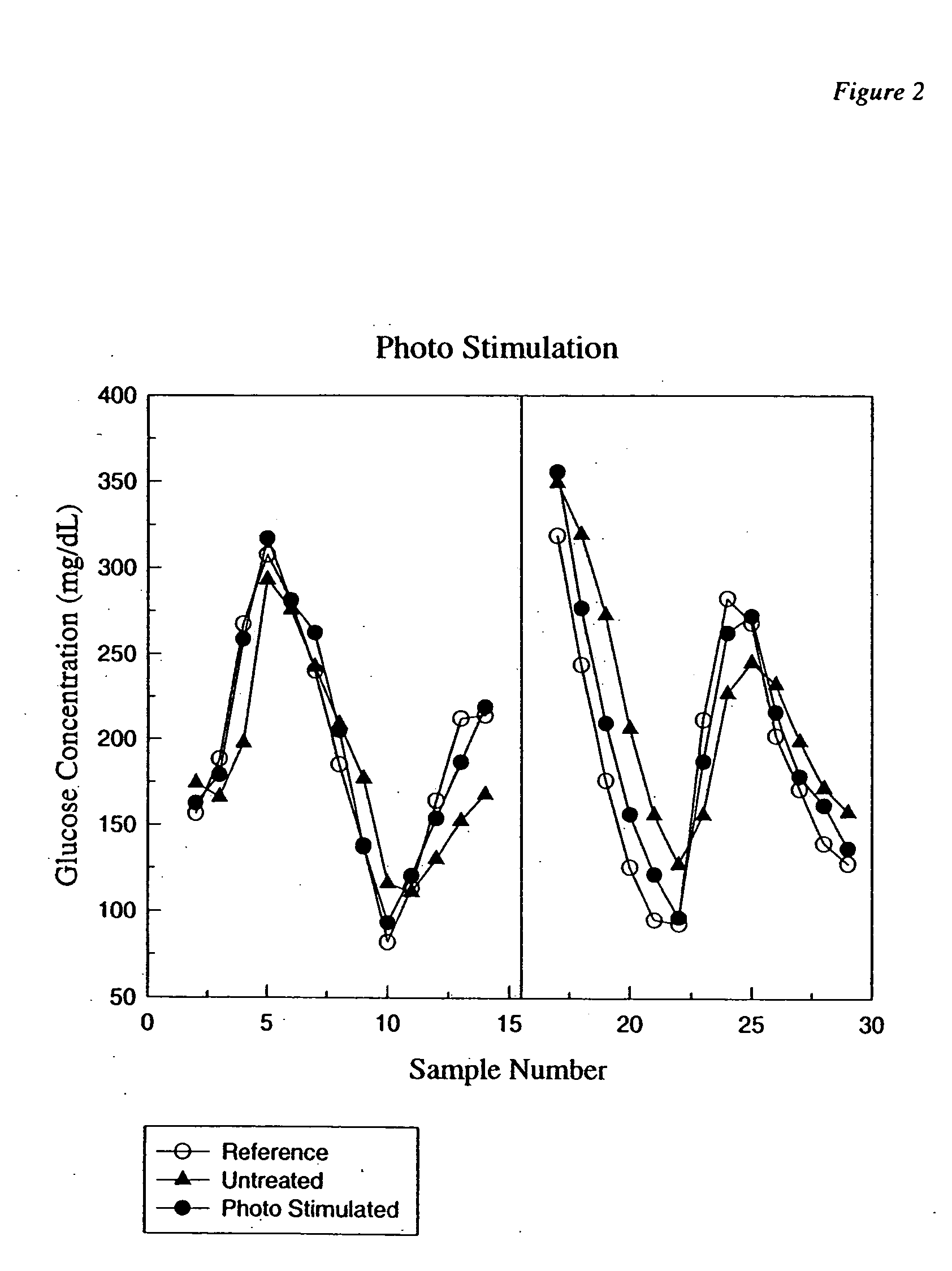Photostimulation method and apparatus in combination with glucose determination
- Summary
- Abstract
- Description
- Claims
- Application Information
AI Technical Summary
Benefits of technology
Problems solved by technology
Method used
Image
Examples
example 1
Incident photons, such as those from an LED, are coupled into the skin through air. This has the benefit of not disturbing the sample site by application of pressure. This is beneficial for a noninvasive measurement. However, for an invasive measurement this pressure impact may be minimal. Coupling photons into skin through air is not the most efficient coupling method due to the index of refraction mismatch and the optical roughness of skin.
example 2
Incident photons are coupled to a sample site via coupling optics such as a fiber optic, one or more lenses or flat optics, and / or a coupling fluid. The coupling optics are in direct contact with the skin. This means that the thermal effects of the coupling optics on the sample surface impact the sampling site temperature. This is tolerated or controlled. Similarly, the coupling optics apply at least some pressure to the sampling site that may disturb the sampling site. Again, this may be tolerated or controlled. Those skilled in the mechanical arts will immediately recognize control techniques such as use of thermally stable materials, thermally less or nonconductive materials, temperature controllers, or adjusting the mass in contact with the sample site to achieve desirable thermal control. Those skilled in the mechanical arts will immediately recognize techniques to control pressure effects such as adjusting mass, distributing pressure over an area, use of counter forces, or pe...
example 3
In some instances the photostimulator is not optically attached to the sample site when not in use. In these cases the source is manually turned on or is activated with automatic activation means known to those skilled in the art. For example, activation means include inducement by pressure applied when sampling, by a switch mechanism in a guide, by sensing movement, or by proximity to a magnetic field. Once activated, the duty cycle is continuous or semi-continuous. Photostimulation duration controls include manual and automatically deactivated after a preset time interval. Photostimulation periods include the beginning of a day or operating period, prior to sampling by multiple minutes, just prior to sampling, and during sampling.
PUM
 Login to View More
Login to View More Abstract
Description
Claims
Application Information
 Login to View More
Login to View More - R&D
- Intellectual Property
- Life Sciences
- Materials
- Tech Scout
- Unparalleled Data Quality
- Higher Quality Content
- 60% Fewer Hallucinations
Browse by: Latest US Patents, China's latest patents, Technical Efficacy Thesaurus, Application Domain, Technology Topic, Popular Technical Reports.
© 2025 PatSnap. All rights reserved.Legal|Privacy policy|Modern Slavery Act Transparency Statement|Sitemap|About US| Contact US: help@patsnap.com



